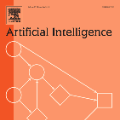Reliability has become an increasing concern in modern computing. Integrated circuits (ICs) are the backbone of modern computing devices across industries, including artificial intelligence (AI), consumer electronics, healthcare, automotive, industrial, and aerospace. Moore Law has driven the semiconductor IC industry toward smaller dimensions, improved performance, and greater energy efficiency. However, as transistors shrink to atomic scales, aging-related degradation mechanisms such as Bias Temperature Instability (BTI), Hot Carrier Injection (HCI), Time-Dependent Dielectric Breakdown (TDDB), Electromigration (EM), and stochastic aging-induced variations have become major reliability threats. From an application perspective, applications like AI training and autonomous driving require continuous and sustainable operation to minimize recovery costs and enhance safety. Additionally, the high cost of chip replacement and reproduction underscores the need for extended lifespans. These factors highlight the urgency of designing more reliable ICs. This survey addresses the critical aging issues in ICs, focusing on fundamental degradation mechanisms and mitigation strategies. It provides a comprehensive overview of aging impact and the methods to counter it, starting with the root causes of aging and summarizing key monitoring techniques at both circuit and system levels. A detailed analysis of circuit-level mitigation strategies highlights the distinct aging characteristics of digital, analog, and SRAM circuits, emphasizing the need for tailored solutions. The survey also explores emerging software approaches in design automation, aging characterization, and mitigation, which are transforming traditional reliability optimization. Finally, it outlines the challenges and future directions for improving aging management and ensuring the long-term reliability of ICs across diverse applications.
翻译:暂无翻译





